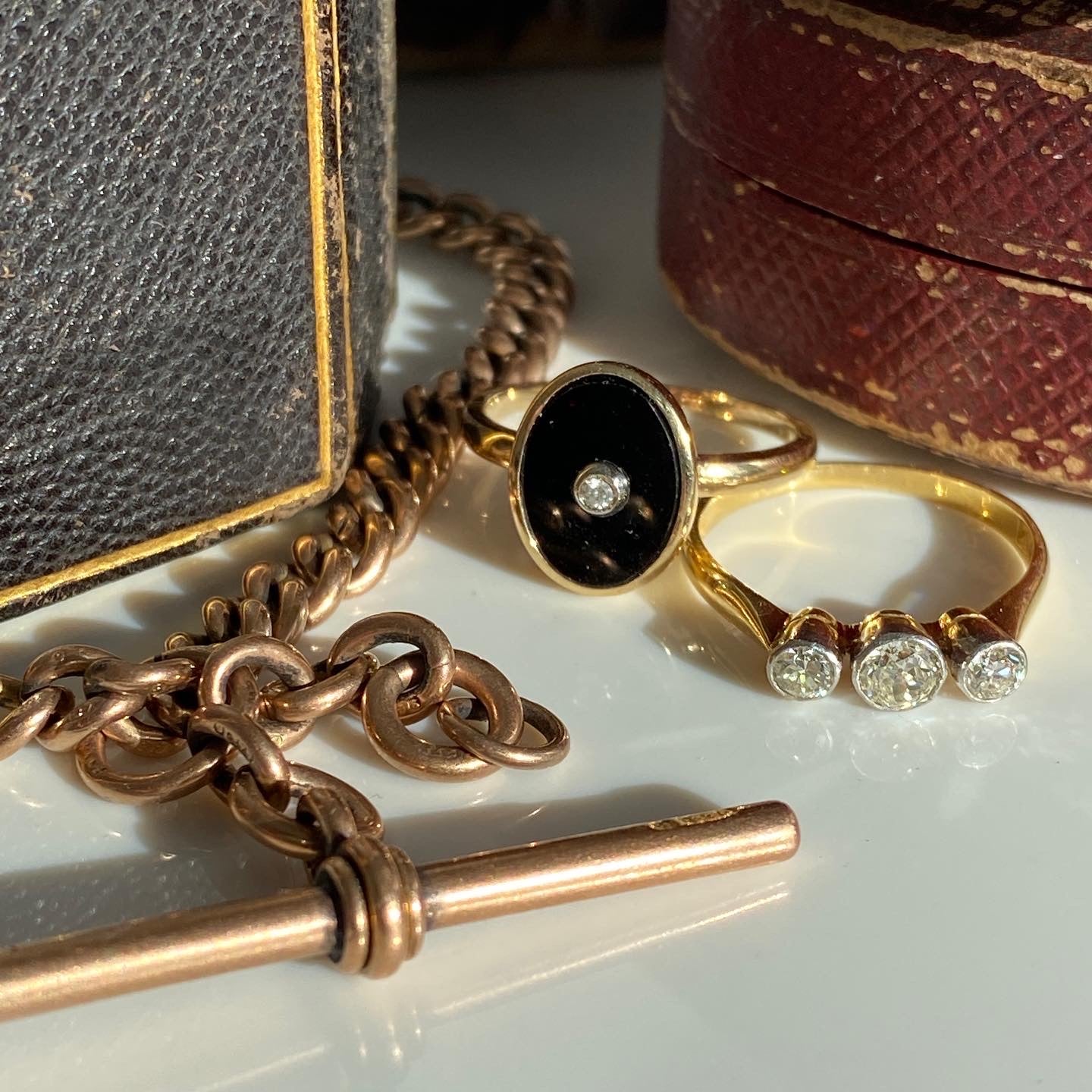Vintage vs Antique
The terms Vintage & Antique are often used interchangeably to describe jewellery of different ages. There is a difference however, and if you are a keen jewellery collector it is useful to master the correct terminology. Along with knowing the historical periods such as Georgian, Victorian, Edwardian and design periods like Art Deco & Retro, the terms Vintage and Antique can tell you a lot about how old something is. And as age can play a large part in determining value it is important to know exactly what you are purchasing.
As time passes, jewellery is lost, broken, or melted down. It is reasonable then to expect that there will be fewer Antique Victorian Silver Bangles, circa 1880 in existence than Vintage Silver Bangles from the 197Os. Both are silver, both are bangles but they vary in age and in value. If in comparable condition, due to rarity and collectability, the Antique Victorian Bangle or Cuff will be of more value than it’s more modern counterpart.
In the case of repaired or restored jewellery, the rule of thumb is that the item must be 50% original to be labelled vintage or antique. Original condition is a vital to the value of antique & vintage jewellery. The more pristine or original an item is, the higher it’s value will be.
What is Vintage jewellery
Stopping just short of Antique and excluding contemporary, vintage jewellery encompasses Mid-Century Modern, 1940’s Retro & 1930’s Late Art Deco. It can be costume jewellery made of paste and chrome or gilded metal, or fine jewellery made of gold, platinum, and diamonds. Like Antique, Vintage is not determined by materials used. Nor by where it was made. Vintage can be French, English or American.
How old is Vintage Jewellery
The term vintage refers to jewellery older than 20 years but less than 100. Anything newer than 20 years might be called Modern or Contemporary.
What is Antique Jewellery
Each piece of antique jewellery is unique. Often they are one off pieces made using techniques that are no longer used. They likely cannot be reproduced or copied with any accuracy. They are a reflection of the limitations of the production methods of the time and the amazing skills of the jeweller. Many of those skills are now lost. With the development of modern jewellery making methods such as CAD or computer assisted design, the old ways are no longer passed on.
How old is antique jewellery
The generally accepted definition of Antique is 100 years old and this term can refer to furniture and decorative arts as well as jewellery. You will encounter Antique Georgian, (1714 – 1830), Antique Victorian (1837 – 1901} & Antique Edwardian (1901 – 1910) Jewellery, all of which reference the reigning British monarch of the period. Art Deco 1920’s – 30’s will shortly be considered antique also.
How to clean antique jewellery
It is vital to retain the original condition of antique jewellery. Patina is a surface effect that can only come with age. Cleaning a piece of antique jewellery with an overly strong cleaning agent will strip it’s hard-won patina and drastically reduce its value. The safest method for cleaning most antique jewellery is to use minimal amounts of a mild soap and warm water. Certain items should not be immersed in water including: Mourning jewellery containing hair, threaded pearls and brooches with locket inserts and either hand painted miniatures or silk linings. A soft toothbrush may be used whilst washing and a soft cloth for drying or a gentle heat from a hairdryer will work well on gold items. More fragile items are best left to dry naturally
Is Antique Jewellery a good investment
Antique jewellery in original condition is a rarity. Rarity equates with scarcity and scarcity drives value. Antique jewellery cannot be replicated. Each piece is unique and it cannot be duplicated using modern methods. As time passes, less antique jewellery survives. And increasingly there are fewer jewellers who are able to restore or repair antique & vintage jewellery. There will always be a market for antique jewellery. Who doesn’t love to be original? Finding a unique jewel in great condition that has not been mass produced, that no-one else will have, is a pleasant circumstance in today’s mass-produced world. Especially as it will also increase in value over time
Where to buy Vintage & Antique Jewellery
Most Antique & Vintage Jewellery lovers relish the chase and look to Antique Jewellery Shops, Antique markets, Auctions, and for the true fossicker opportunity shops. Post Covid, Online Stores like SEDGWICKS offer another opportunity to find treasures.
The rules remain the same – buy from reputable dealers who guarantee their stock.
Look at reviews and length of time in business, qualifications – gemmology, valuing, diamond grading etc. Also are they members of professional organisations NCJV, JAA, GAA etc. Ask lots of questions or for more images if you are buying online.

